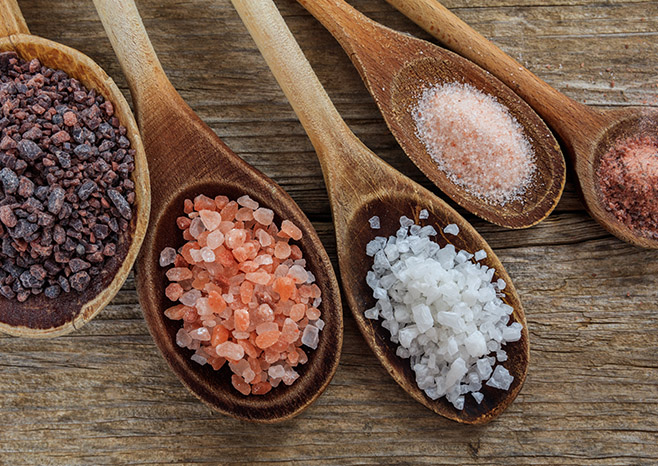
Food Focus: Salt
As a necessity for food preservation and seasoning, salt has played a primary role in the development of human civilization. While salt is now readily available and relatively inexpensive, it was once quite difficult to obtain and considered a highly valued commodity. It remains an essential mineral with countless uses in our everyday lives. Here is a quick overview of health information and different varieties to keep you well-informed of this simple, yet sophisticated pantry staple.
A 1/4-teaspoon-serving-size of table salt contains 590mg of sodium. Americans typically consume about 3,400mg of sodium daily, far exceeding the government-recommended amount of 2,300mg. Since excess sodium consumption can present issues for individuals with an increased risk for heart disease, the Dietary Guidelines for Americans have been updated to restrict sodium intake to 1,500mg per day for individuals aged 51 or older, African Americans and patients diagnosed with hypertension, diabetes or chronic kidney disease.
Salt Varieties
Iodized table salt, a fine-grain salt, contains the additive potassium iodide, or iodine. Iodine was initially added to table salt in 1924 as a preventative for hypothyroidism. The finer, free-flowing crystals make it ideal for at-the-table seasoning, cooking, baking, marinades and dough.
Kosher, a coarse-grained variety, is the preferred salt of restaurant chefs and used by observant Jews for koshering meats and poultry. It’s perfect as a finishing salt for prepared foods, rubs, encrusting meat, fish or chicken, marinades, canning/pickling, and brining meat and poultry. It’s also the type used for salt-rimmed glasses.
Sea salt, available in both fine and coarse grain, is unrefined and generally obtained through the evaporation of seawater. While both grain sizes work well for seasoning foods and cooking, coarse grain salt is best used in rubs or as a topping for bagels, soft pretzels and breadsticks. Fine grain is better for baking, marinades and sprinkling on popcorn and corn on the cob.
Gourmet salts can also add just the right zing to a dish. Indian black salt contains traces of volcanic ash, giving it a slight taste similar to hard-boiled eggs. It’s ideal on salads, sandwiches and other dishes that would typically feature eggs. Pink Himalayan salt and red Hawaiian salt owe their reddish hues and smooth flavor to the clay that’s mixed with the salt; their mild flavor allows either salt to pair well with almost any dish.




